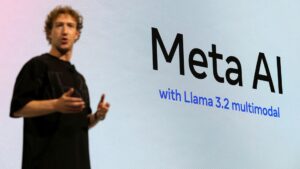Understanding AI Distillation: DeepSeek’s Effective Application

Understanding AI Distillation
In the field of artificial intelligence, the concept of “distillation” has recently gained significant attention. This process enhances the functionality of large language models (LLMs), allowing them to become smaller and quicker, while often retaining a similar level of capability as their larger counterparts. A prominent example of this occurred in early 2024 when a relatively unknown Chinese company, DeepSeek, introduced DeepSeek-V2. This open-source model achieved results close to OpenAI’s GPT-4 on numerous performance metrics, exemplifying the transformational potential of model distillation.
What Is AI Distillation?
AI distillation, also known as knowledge distillation, is a machine learning approach where a smaller model—termed the "student"—is trained to replicate the performance of a larger, more complex model known as the "teacher." The concept was first introduced in a significant paper by Geoffrey Hinton and his team in 2015. They outlined a method to transfer essential outputs or "knowledge" from a high-performing but cumbersome model to a more agile version.
How Does The Distillation Process Work?
The distillation process relies on two main models:
- Teacher Model: A large and accurate neural network that is resource-intensive.
- Student Model: A more compact network designed to replicate the performance of the teacher while requiring fewer computational resources.
Here’s a simplified overview of how distillation operates:
- Pretraining: The teacher model undergoes initial training on extensive datasets, often utilizing vast computational power unavailable to many groups.
- Soft Targets: Instead of only using firm labels (the correct answers), the student is trained with “soft targets”—probabilities that the teacher model assigns to different potential outputs. These provide richer information, capturing the teacher’s nuanced understanding.
- Imitation Learning: The student model’s learning is adjusted to minimize the discrepancy between its outputs and the teacher’s. This is usually done through a method called Kullback-Leibler (KL) divergence, comparing probability distributions.
This process can lead to smaller models that are memory-efficient and faster while potentially achieving performance levels close to their more substantial teacher models.
The Rise of Large Language Models
With the development of massive language models like OpenAI’s GPT-3 and GPT-4, and other models from companies like Anthropic and Google, a new standard has been set in AI. However, the substantial size of these models comes with significant implications for computational resources. This has fueled interest in distillation to see if these extensive capabilities can be condensed for more practical application.
Recent years have seen the emergence of various "distilled" models, like DistilBERT and different forms of Llama. These models enable developers to access high-quality AI in a far more efficient and cost-effective manner.
DeepSeek’s Groundbreaking Achievement
DeepSeek’s introduction of DeepSeek-V2 in February 2024 marked a significant moment in AI. This model, boasting an impressive 236 billion parameters, matched or surpassed GPT-4 and Google’s Gemini 1.5 Pro on several standard tests, such as MMLU and HumanEval. The success of DeepSeek was largely attributed to its strategic use of knowledge distillation:
- Initial Pretraining: Like other leading models, DeepSeek-V2 was first trained on a broad multilingual dataset containing vast amounts of high-quality data.
- Training from Elite Models: Unlike traditional methods, DeepSeek-V2 learned from outputs generated by several top proprietary models, enabling it to grasp not just the information they contained but also the reasoning and context behind the responses.
- Refining with Human Feedback: The model underwent further fine-tuning through reinforcement learning, enhancing its instruction-following abilities.
The result of this meticulous approach was a capable model that integrated the strengths of several elite systems while operating at a significantly reduced cost and with globally accessible resources.
What Did This Mean for Competitors Like OpenAI?
OpenAI has maintained a competitive edge through the capabilities of its models and the exclusivity of its technology. While they have offered API access, the complete weights of their models remain unavailable. DeepSeek’s open-source approach shifted this dynamic, allowing anyone to utilize, examine, and improve the model:
- Open-Source Availability: By making the full model weights public, DeepSeek empowered developers to run and modify the model without costs.
- Efficiency with Mixture-of-Experts (MoE): The innovative architectural design allowed for high performance without exorbitant inference costs.
- Leveraging Multiple Models: By distilling knowledge from various high-performing models, DeepSeek bypassed the extensive investments typically necessary for new model training.
According to various benchmarks, DeepSeek-V2 achieved enormous successes, showing dominance in metrics like MMLU and coding tasks while demonstrating notable advantages in handling multilingual scenarios.
The Impact of Distillation on the AI Landscape
DeepSeek’s advancement illustrates that proprietary AI models are not as impenetrable as once thought. By selectively distilling outputs and reasoning styles from leading systems, DeepSeek managed to create a powerful AI tool without the need for expensive and lengthy pretraining phases.
Knowledge distillation functions as a critical equalizer in AI research, enabling new players to quickly access and innovate around state-of-the-art capabilities:
- Accelerated Learning: New developers can reach advanced performance levels without starting from scratch.
- Cost-Effective Development: Building a distilled model is significantly cheaper and faster compared to developing a full-scale teacher model.
- Enhanced Safety and Flexibility: Open access allows the community to inspect, modify, and improve models, contributing to safer AI practices.
Nevertheless, as the capabilities of AI models expand, concerns about their accessibility arise. Observers caution that open access to distilled knowledge from proprietary systems may present risks concerning security and responsible AI governance. These dynamics and their implications are shaping the evolving landscape of artificial intelligence.





